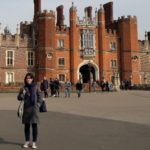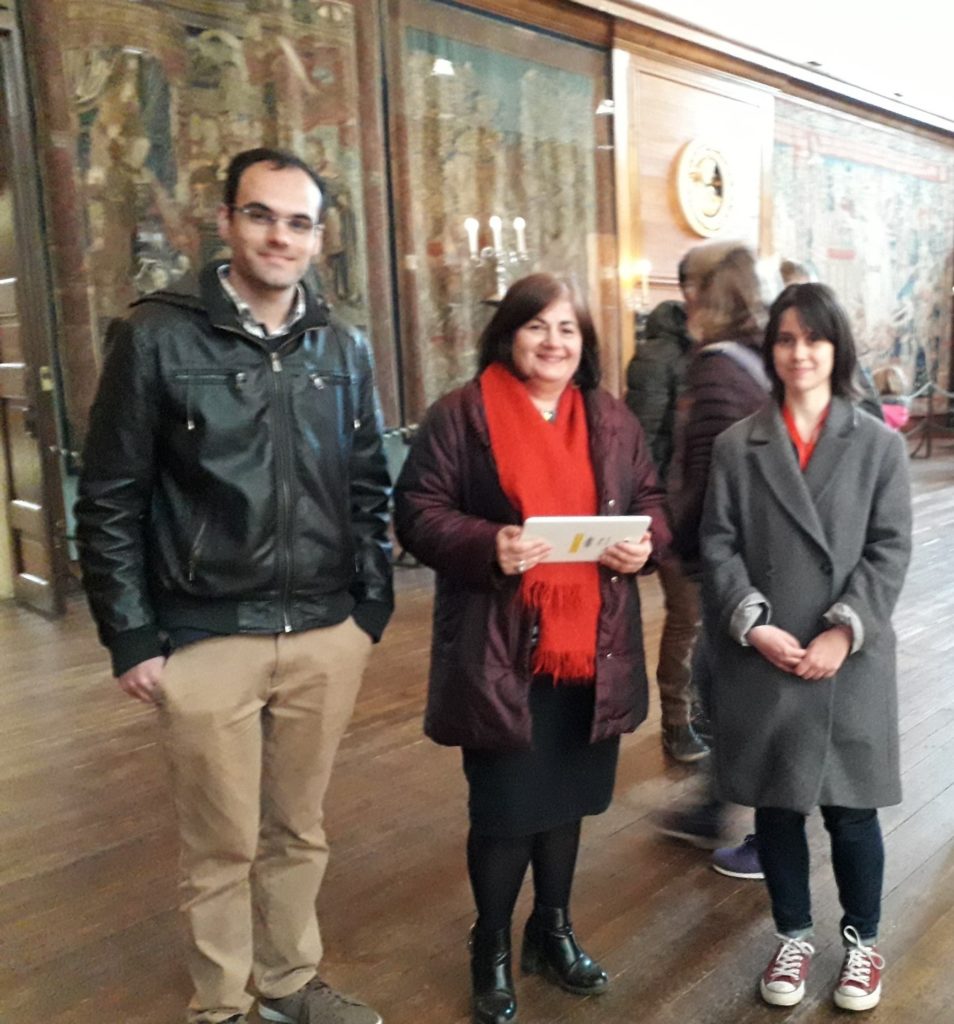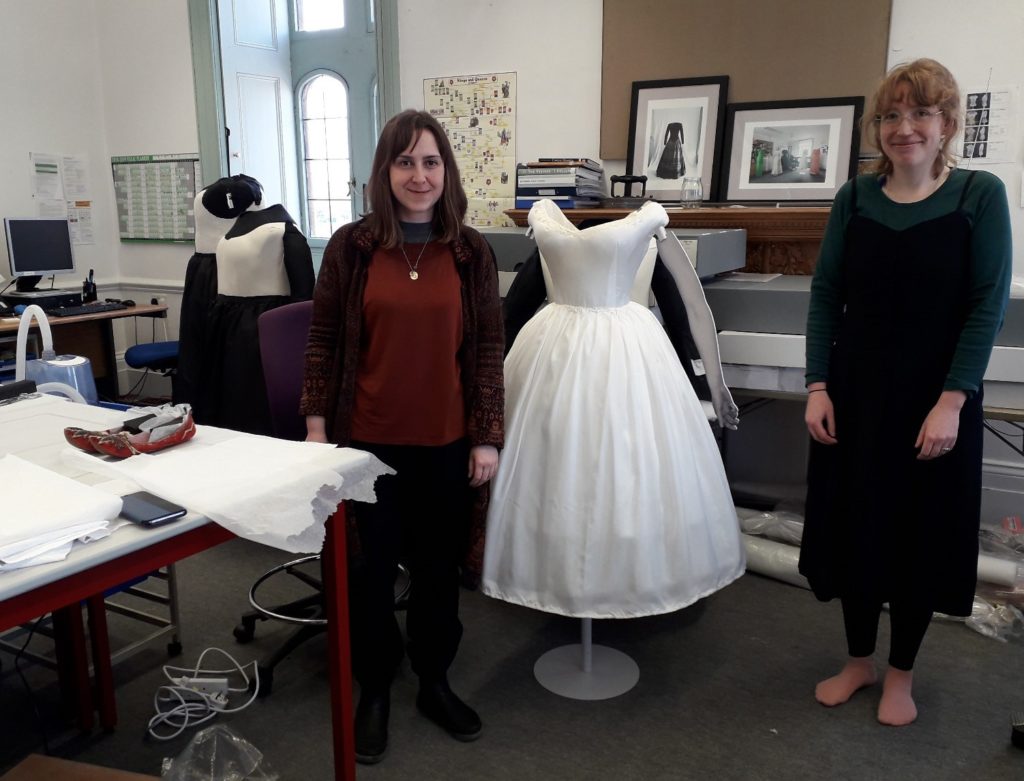
by Rosa Costantini, Phd student.
As a nice break from the PhD routine, which in spring is marked by the stress for the upcoming annual progress review, at the beginning of April I spent a day visiting Hampton Court Palace. During the centuries, the palace was (one of) the houses of the royal family, particularly loved by Henry the VIII. Besides six wives, the Tudor king brought here his precious collection of tapestries, the main attraction of my visit. Indeed, my PhD project, (temporarily) entitled From the Golden Age to the Digital Age: Monitoring Historic Tapestries, deals with tapestries, their degradation and conservation. Namely, the study aims to better understand the effects of self-weight loading across these heavy objects and to evaluate what is the best approach to conserve and display them. To do this in an objective way, engineering techniques are employed.

West front and main entrance of Hampton Court Palace.
The visit to Hampton Court Palace was a milestone in my research, not only to fully appreciate the famous Abraham tapestries displayed in the Great Hall, but also to meet and discuss with scientists and textile conservators whose work is devoted to preserving the important collection of historic hangings. In particular, the Historic Royal Palaces’ Conservation Science Team, which has its own laboratory within the palace, is greatly focused on finding the optimum conditions for the display of the Tudor tapestries, by looking at factors such as dust accumulation, light exposure, temperature and relative humidity. The discussion with the group, led by Dr Constantina Vlachou-Mogire, the Conservation Science Manager, was extremely enriching for my study, especially to compare, in a constructive way, my research to that of Pedro Rocha, another PhD student. Pedro is working on Modelling Strain in Historic Tapestries, a collaborative project between UCL Department of Civil, Environmental & Geomatic Engineering, Historic Royal Palaces and IBM Research (co-founded by Engineering and Physical Sciences Research Council and Historic Royal Palaces) . Interestingly, Pedro’s research questions are similar to mine, although to answer them we are employing different methods. Speaking with him, as well as with the conservators and scientists of the Conservation and Collection Care department, was very stimulating and offered me new perspectives and ideas.

In the Great Watching Chamber with Pedro Rocha and Dr Constantina Vlachou-Mogire.
Last but not least, for both me and my supervisor Prof Frances Lennard, the trip was a nice way to meet former CTC students who now work as textile conservators at the Palace!

Beatrice Farmer and Rose Chamberlin, CTC graduates, preparing mannequins and display mounts for exhibitions.

